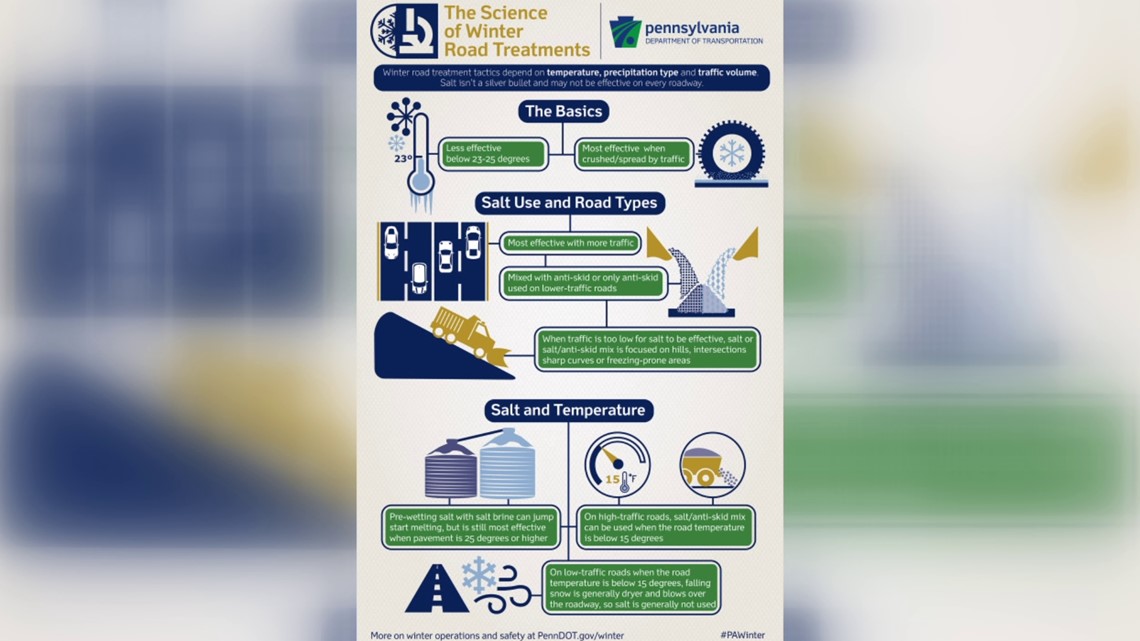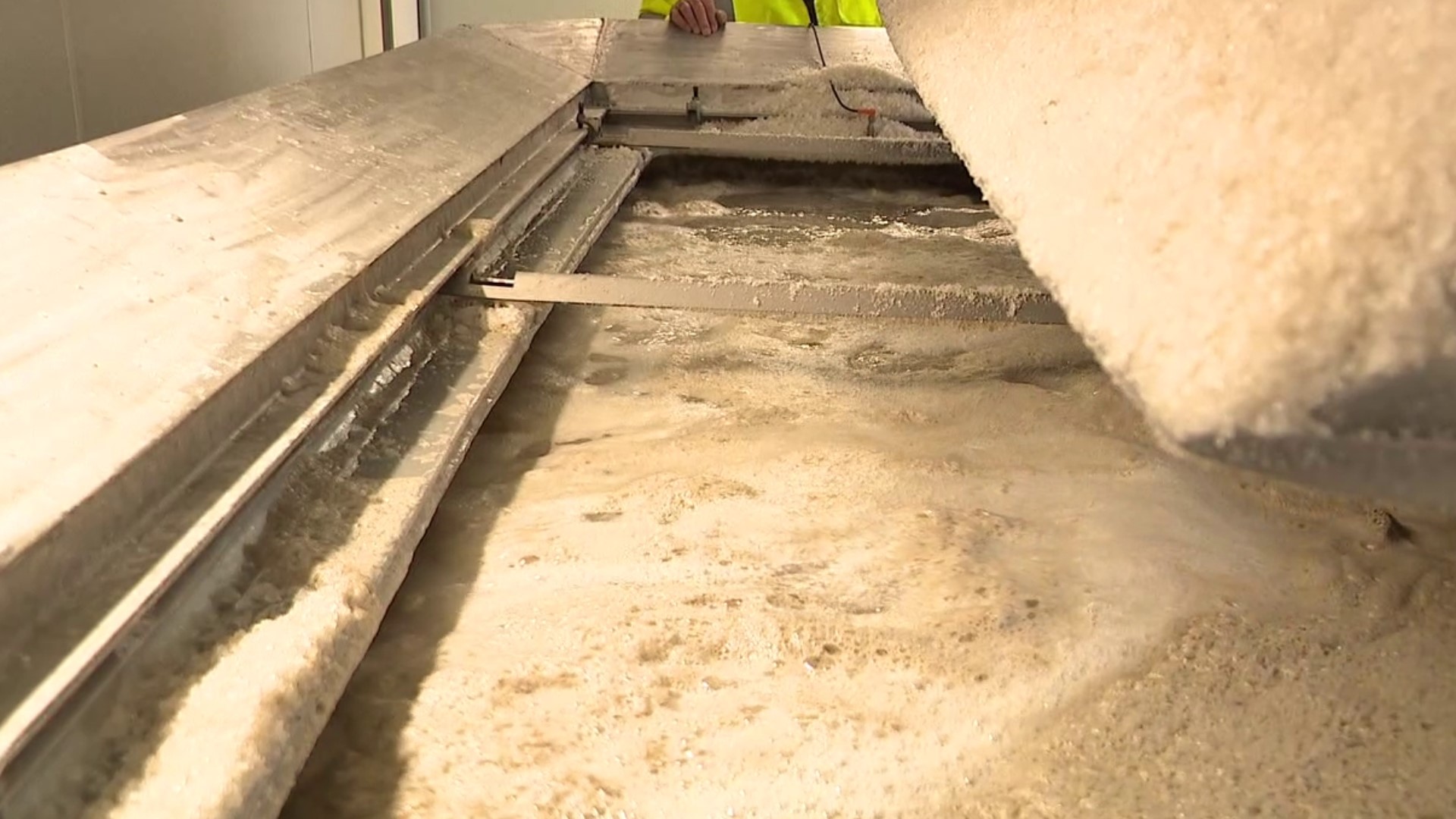BLOOMING GROVE, Pa. — Salt does not melt, it just changes the freezing point of water, and salt brine has to be the perfect combination of salt and water in order for it be effective on our roads. PennDOT crews showed Newswatch 16 how they make it and then how they use it.
There are 41 winter stockpile sheds all over Northeastern PA, but before the materials are brought to each stockpile, PennDOT crews have to make the salt brine.
Salt brine is just a mix of salt and water. The brine at 23.3% salt and 76.7% water provides optimum freeze point protection; too little or too much salt increases the freeze point, so it would not stop the wintry precipitation from freezing to the roadways as effectively.
"Goes down, the tankers go out and apply it to the roadway, the water evaporates, and the lines you see are the salt that is left," said District Highway Maintenance Manager Gene Perry, PennDOT District 4.
The salt that is left ensures the wintry precipitation coming down does not freeze to the roadways.
Solar salt which is basically evaporated salt goes into a front end loader. The salt gets dumped into the brine maker, where water is already flowing. It starts diluting until it reaches that 23.3% concentration. Once it does, it starts flowing into tanks. This happens in every county across PA and then the salt brine is distributed to each shed.


"What we do with the brine, it pumps out through, goes through our blend boss, hooks right up to our tanker , we go out to our satellite stockpiles and it's distributed out that way," said County Maintenance Manager Jeff Luongo, PennDOT Pike County.
The temperature, type of precipitation that is falling and the volume of traffic are all factors when treating our roads.
For example, salt brine becomes less effective when the temperature is below 25 degrees, so road crews will increase application rates at that point.
"Every event is different for us. They're hard. We watch the forecasts as the events come in. Different types of precipitation obviously use different types of material," Perry said.
To see more on how PennDot handles winter operations, check out their information page.

